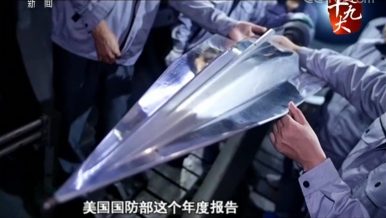
Robert Work, former Deputy Secretary of Defense and one of the architects of the Third Offset Strategy, has a very interesting article up over at Task & Purpose detailing the origins of the People’s Republic of China’s (PRC) anti-access/area denial (A2/AD) strategy and the development of military technology to enable it.
According to Work, the PRC government was humiliated by the impunity with which the U.S. was able to sail its aircraft carrier task forces unimpeded through the waters between China and Taiwan during the Third Taiwan Straits crisis in 1995-1996. Soon after, the PRC began a process of military modernization that remains in progress. Part of the modernization included technical development along three main “complementary lines of effort.”
- The objective of the first line of effort was to obtain rough parity with the U.S. in “battle network-guided munitions warfare in the Western Pacific.” This included detailed study of U.S. performance in the 1990-1991 Gulf War and development of a Chinese version of a battle network that features ballistic and guided missiles.
- The second line of effort resulted in a sophisticated capability to attack U.S. networked military capabilities through “a blend of cyber, electronic warfare, and deception operations.”
- The third line of effort produced specialized “assassin’s mace” capabilities for attacking specific weapons systems used for projecting U.S. military power overseas, such as aircraft carriers.
Work asserts that “These three lines of effort now enable contemporary Chinese battle networks to contest the U.S. military in every operating domain: sea, air, land, space, and cyberspace.”
He goes on to describe a fourth technological development line of effort, the fielding of hypersonic glide vehicles (HGV). HGV’s are winged re-entry vehicles boosted aloft by ballistic missiles. Moving at hypersonic speeds at near space altitudes (below 100 kilometers) yet maneuverable, HGVs carrying warheads would be exceptionally difficult to intercept even if the U.S. fielded ballistic missile defense systems capable of engaging such targets (which it currently does not). The Chinese have already deployed HGVs on Dong Feng (DF) 17 intermediate-range ballistic missiles, and late last year began operational testing of the DF-21 possessing intercontinental range.
Work concludes with a stark admonition: “An energetic and robust U.S. response to HGVs is required, including the development of new defenses and offensive hypersonic weapons of our own.”
